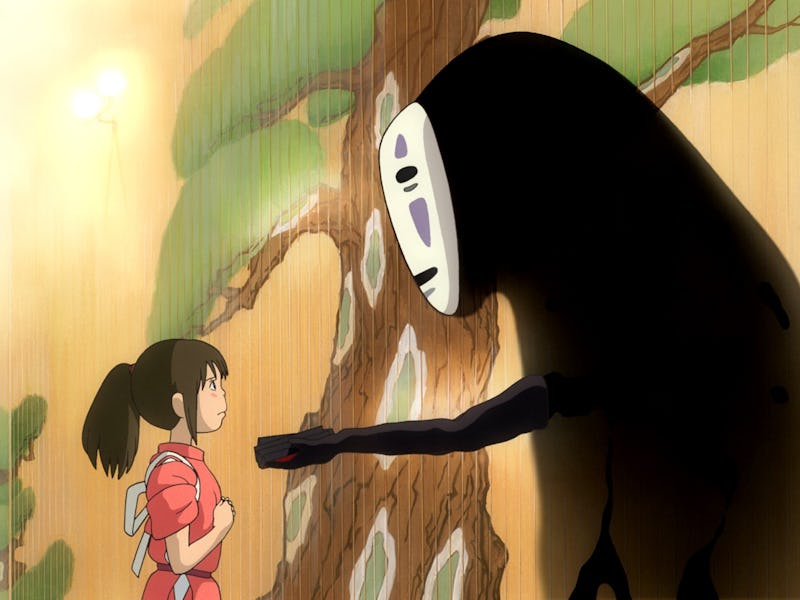The Biggest Mystery of Spirited Away Has a More Interesting Answer Than You Think
"I'm lonely..."

Spirited Away is a movie that doesn’t offer many answers. The 2001 fantasy film is an evocative masterpiece from anime titan Hayao Miyazaki that delivers rich worldbuilding, dazzling visuals, and a thematically dense story that’s part Alice in Wonderland and part myth of Orpheus, all paired with Miyazaki’s typically cogent environmental commentary. But if you were to ask Miyazaki what it all means, you wouldn’t get one single answer.
And so it’s fitting that, more than two decades after Spirited Away’s release, the answer Miyazaki offers for the film’s biggest mystery is just as enigmatic as the movie.
During a showing of Spirited Away on Nippon TV (which recently acquired Miyazaki’s Studio Ghibli), the station revealed a never-before-seen piece of trivia about No Face, the mysterious figure who helps Chihiro on her quest to save her parents from their slaughterhouse fate, but also eats a bunch of people. In a tweet (via SoraNews 24) released alongside the showing of Spirited Away, Nippon TV revealed that Miyazaki — for the first time since the movie’s release — gave an answer on who exactly No Face is. Or, more precisely, what No Face represents.
“There are many people like No Face in our midst...” Miyazaki said. “It’s the type of person who wants to latch on to others but doesn’t have a sense of themselves. They are everywhere.’”
No Face isn’t a specific individual, but a representation of society’s corrupting influence.
If you were to Google Spirited Away, one of the most frequent questions accompanying the results is “Who is No Face?” There are plenty of theories — that he’s another human trapped in the Spirit World who lost his identity, or that he represents the horrors of child slavery in Japan — but the answer, as confirmed by Miyazaki, is both more and less simple than that.
No Face is a blank slate who both reflects and absorbs the personalities of those around him. That’s why, in the bathhouse, he becomes an engorged, greedy monster whose insatiable appetite leads him to eat everything and everyone around him. The bathhouse is full of greedy, slimy people who would gladly trample over each other for an extra coin, so No Face becomes exactly what they want. When Chihiro theorizes the bathhouse is making him sick and he’s removed, he goes back to the quiet, demure spirit he was before.
In other words, it’s about society, man.
But Miyazaki’s depiction of a sort of person who might be seen as weak-willed or spineless in the real world has a ray of hope. Later in the film, No Face is given a chance to redeem himself in an environment much more nurturing than the sickly decadence of Yubaba’s bathhouse. He becomes a sweet spirit who likes knitting and tea, and thinks no more of eating people — Miyazaki’s vision of a simpler life free of the dregs of capitalism. In a way, No Face is all of us, and Miyazaki is telling us that we could all stand to sit back, enjoy the tea, and free ourselves from the poisonous pressures of society.
This article was originally published on